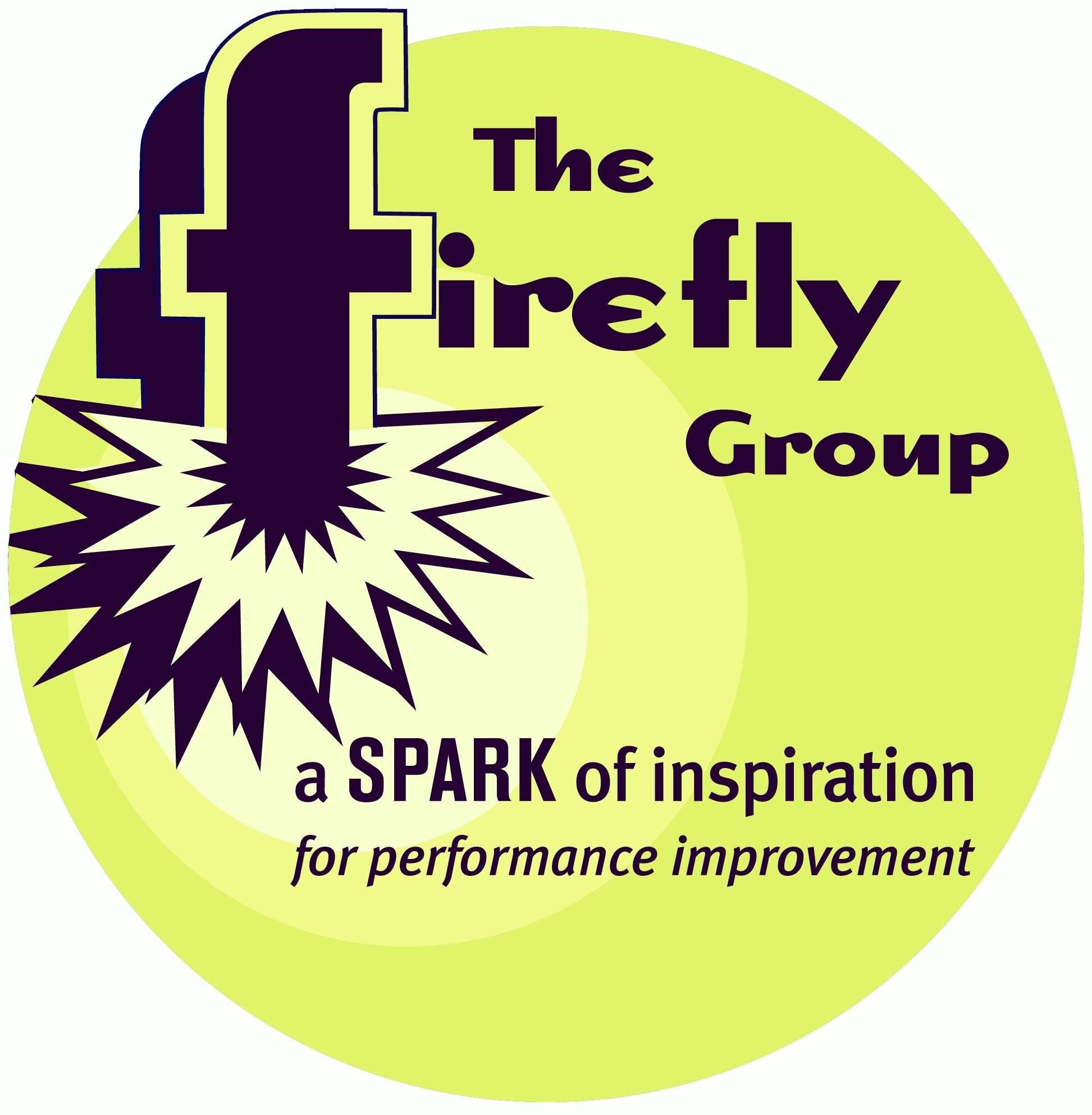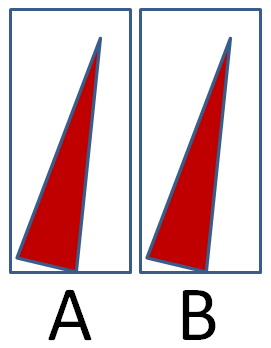

The Firefly Group helps people use everyday situations for learning and connecting to the Big Picture. After working with Firefly, you will be energized with specific action steps to achieve your goals.
We do this through training of trainers, leadership development, performance improvement training, strategic planning, writing training manuals, and clarification of organizational mission and vision. Our methods are engaging, thought-filled, and results-oriented.
 If
this sounds like a good direction for your organization, let's talk about
how we might collaborate! Please give me a call (802.257.7247) or send an
. - Brian
If
this sounds like a good direction for your organization, let's talk about
how we might collaborate! Please give me a call (802.257.7247) or send an
. - Brian
 Your ETR (Estimated Time to Read): 10 minutes Your ETII (Estimated Time to Implement Ideas): 5 weeks |
November 2013
Readers Write: Read what others have to say about our ever-present visual blind spot and the activity to discover your own.
|
Say
It Quick |
Discoveries bits of serendipity to inspire and motivate |
Ideas fuel for your own continuous learning |
Activities tips and tricks you can try today |
| Oops! | Illusions | Stop and Look Around |
The Zen master who said reality is an illusion had it right. But illusions also create what we believe is real. Learn all about this conundrum beginning with this story in just 99 words.
Oops!
The car kept moving so I couldn't ask the driver what her license plate meant. It said, "NOMSTKS." It must mean "No Mistakes." Now I'm really curious. Why would someone want to be error free? Mistakes cause problems but they also produce powerful learning. The only big mistakes of life are the ones we don't learn from!Maybe it means the driver has no regrets, no remorse. She will bulldoze anyone as she speeds through life. Too bad for the spelling error and missing vowels.
Perhaps it really means "No Mystics," and I should stop asking philosophical questions!
Illusions
The October 2013 Firefly News Flash, examined
the book Subliminal by Leonard Mlodinow which describes the impact
our unconscious has on perception, memory, emotions, self-concept, and our
ultimate interpretation of the world.
This month, a special issue of Scientific American Mind, "Illusions: 187 Ways to Trick Your Brain," offers specific mind-benders that illuminate the workings of our senses, our subconscious, and our conscious mind.
 Each
article of the magazine has a brief description of a different type of illusion
followed by several pages of examples along with websites and references for
more explanations. Scientists use various illusions to trick the brain into
perceiving things that are not there - or to miss things that are present.
By studying the discrepancies and examining fMRI scans, scientists can begin
to understand the calculations our brains use to understand the world around
us.
Each
article of the magazine has a brief description of a different type of illusion
followed by several pages of examples along with websites and references for
more explanations. Scientists use various illusions to trick the brain into
perceiving things that are not there - or to miss things that are present.
By studying the discrepancies and examining fMRI scans, scientists can begin
to understand the calculations our brains use to understand the world around
us.
With 187 brain tricks, the illusions highlighted are varied. Brightness illusions demonstrate that the same shade of gray on a chess board can look like white or black depending on the surrounding squares. Our perception of colors also changes depending on the hues that are adjacent. Some illusions give the sensation of movement in a static picture while others depict a three dimensional image that instantly deteriorates as soon as our angle of view changes.
Different illusions toy with our sense of size and perspective. For example, this woman's dress is designed to enhance her figure. The black panels on the sides of the dress tend to disappear. As a result, our eye focuses on the checked center of the dress giving the woman a more slender appearance.
 Another
example is the Twin Towers of Pisa illusion. Look at pictures A and B of a
pair of leaning red towers. Does B seem to be leaning further than A? In fact,
the two pictures are identical but the images break the rules of perspective
our brain has constructed. We have learned that parallel lines should recede
to a vanishing point in the distance. When they don't, we interpret them as
being at different angles. You can see an even more dramatic interpretation
of this effect with identical photos of the real Leaning Tower of Pisa HERE.
(http://illusionoftheyear.com/2007/the-leaning-tower-illusion/)
Another
example is the Twin Towers of Pisa illusion. Look at pictures A and B of a
pair of leaning red towers. Does B seem to be leaning further than A? In fact,
the two pictures are identical but the images break the rules of perspective
our brain has constructed. We have learned that parallel lines should recede
to a vanishing point in the distance. When they don't, we interpret them as
being at different angles. You can see an even more dramatic interpretation
of this effect with identical photos of the real Leaning Tower of Pisa HERE.
(http://illusionoftheyear.com/2007/the-leaning-tower-illusion/)
But the study of illusion is not confined to visual stimuli. The sensation of pain can also be an illusion. In one experiment, participants place their hand on a device with tubes of alternating hot and cold temperatures. Neither the hot nor cold are so extreme as to cause physical damage or even pain by themselves. In fact, the two cancel themselves out so that the person's hand does not change temperature at all. However, the person does experience a sensation of extreme pain. Our neural pain centers can light up when watching someone else - even a toy dinosaur - being mistreated. And burn patients can be distracted from the pain of treatment by playing video games.
If you like the brain twists you find in "Illusions: 187 Ways to Trick Your Brain," you will also appreciate The Best Illusion of the Year Contest at http://illusionoftheyear.com/ where you'll find an array of illusions spanning nearly 10 years of competition.
"Illusions: 187 Ways to Trick Your Brain." Scientific American Mind. Volume 22, Number 3, Fall 2013. Sharon Guynup, Issue Editor. (ISSN: 1936-1513) www.Mind.ScientificAmerican.com.
Filling in
the Details
The study of illusions reveals that nothing is absolute as far as our brain
is concerned. Whether size, color, shading, temperature, pitch, volume, taste,
or emotion, our mind only perceives relative differences not absolute values.
All the data our senses pick up is compared to something else. For example,
black is only black when next to something lighter. In fact, the amount of
light reflected from the white space on a newspaper under indoor lighting,
is the same amount reflected from the black print on the same page in direct
sunlight. Yet we have no trouble distinguishing white from black in ether
context.
Scientists have learned that our senses gather data to create a broad understanding about the world. Then our brain fills in the details. Sometimes, as in my interpretation of a license plate in the 99-Word Story, we make things up. Most of the time, however, our subconscious does the fabrication before we even realize it.
Illusions shed light on this process of sensing and perception. Here is an illusion that is particularly revealing. At this link, you'll see a picture of Albert Einstein. But step back a few paces and look at his image from a distance and you'll be astonished to see that he has transformed into someone completely different!
This is an example of a hybrid image. It plays upon the difference between cells in our retina that specialize in seeing details and those that specialize in a broader view. The detail-perceiving cells take over at close range identifying specific aspects of the image. But at a distance, the peripheral-viewing cells capture the big picture to reveal a totally different portrait. Though we use both types of cells to understand any image, it's very difficult to see both Einstein and his counterpart at the same time. (You can see other examples of hybrid images at this link: http://cvcl.mit.edu/hybrid_gallery/gallery.html)
Whenever we encounter a problem or when something doesn't turn out the way we expected, we can ask ourselves, "What are the broad assumptions I am making now and what details might my mind be filling in without my conscious choice? Can I identify other details that explain the situation differently?"
No matter which senses are being tricked, the discrepancies of illusions can be great teachers. The bigger our mistakes (or should I say MSTKS?), the more significant our learning.
 Stop
and Look Around
Stop
and Look Around
The brain is wired for dualities, making comparisons, and categorizing information.
As the 99-Word Story suggests, knowing the full context is critical to understanding
a situation. Without considering the environmental factors that influence
our perceptions, our interpretation may be reduced to just one or two options.
Active practice is critical for appreciating other perspectives; we won't
see them naturally.
Here's an illusion to help you and your group counter the tendency for dualistic thinking.
Ask people to look at this photo of a stop sign that was damaged by a passing snow plow last winter. Which way is it facing?
(Ask people to silently make their own decision before soliciting answers.)
Discussion:

When your group has had a thorough discussion of this topic, click HERE to see another view of the stop sign in a wider context.
Illusions are an antidote for dualistic thinking. They teach us the power of holding two opposing viewpoints at the same time - or at least teach us how to switch quickly between two or more viewpoints.
If you try this activity, send a note to to share your perspective about how well it worked!
Hi Brian,
Your blind spot jolt is very timely.
I just delivered 360 survey results to some of our employees. In the email
message, I suggested the recipient to:
These five bullet point suggestions I shared with the employees are from the book "Improving Performance with Feedback" by Chuck Hickok. I think your jolt will provide an appropriate activity the next time I deliver this training in person. -- Tracy Tagliati, California
|
Whether you need a keynote speaker, or help with strategic planning, performance improvement, or training facilitators and trainers in your organization, I look forward to your call (802.257.7247) or . -- Brian |
Read previous
issues. Click Library!
To add or delete your name to our mailing list, email
with a short note in the subject line.
I want this newsletter to be practical, succinct, and thoughtful. If you have suggestions about how I can meet these criteria, please let me know! Send me an with your thoughts and ideas.
Home
| Services
| Products
| Mission
| Ideas |
The Group
| The Buzz
(c)
2013 The Firefly Group